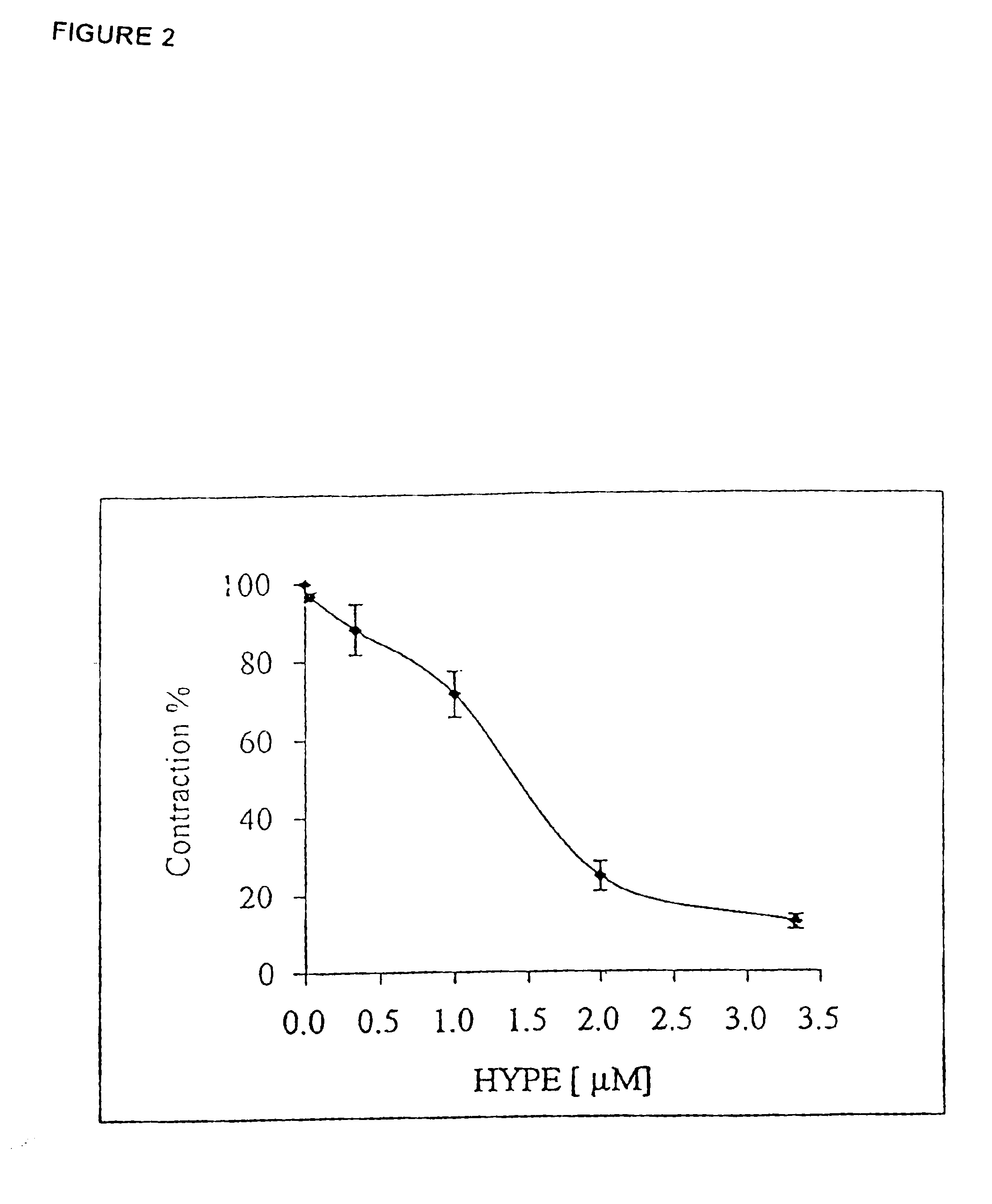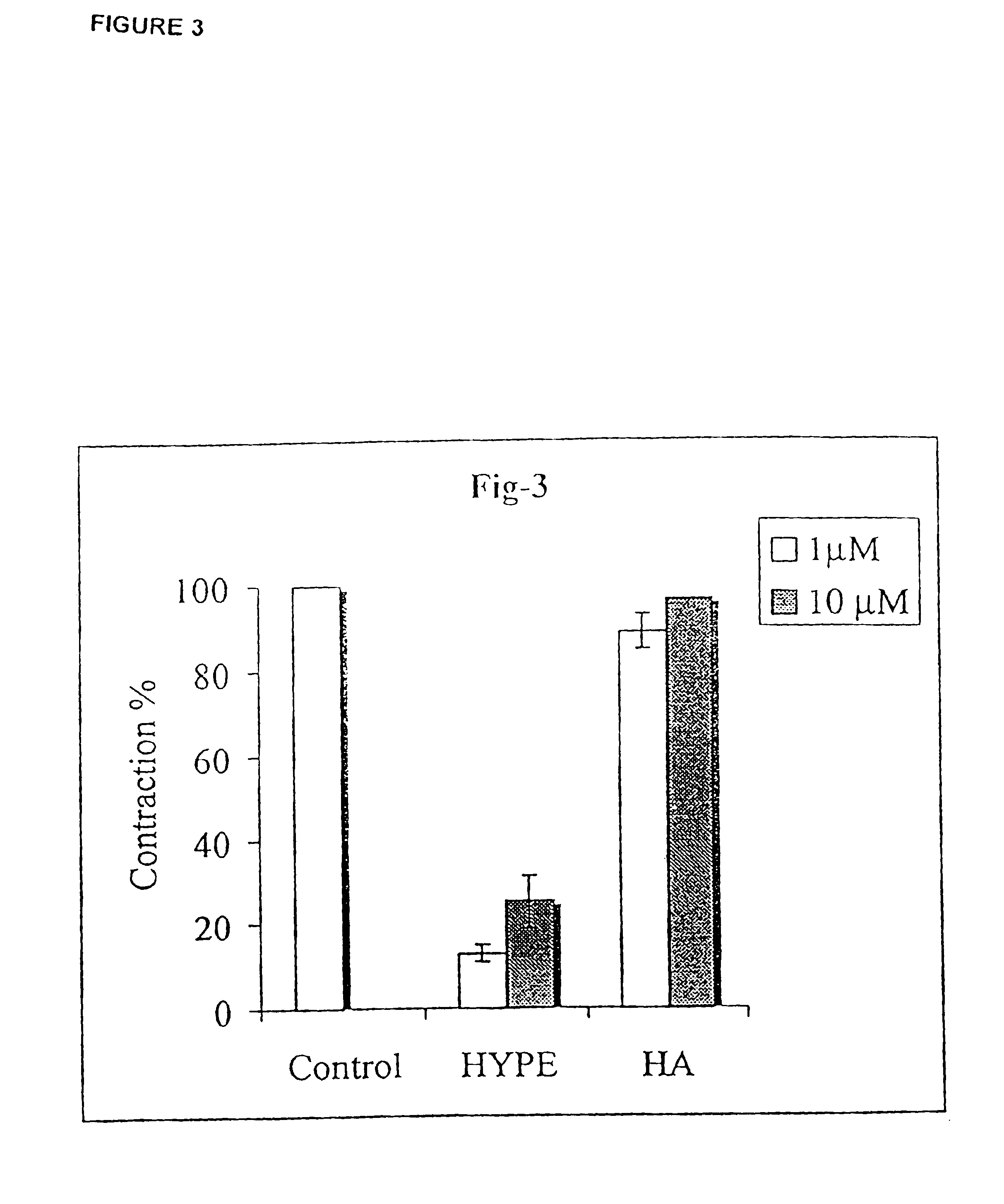Use of lipid conjugates in the treatment of disease
- Summary
- Abstract
- Description
- Claims
- Application Information
AI Technical Summary
Benefits of technology
Problems solved by technology
Method used
Image
Examples
example 1
Obstructive Respiratory Disease
[0274]PE conjugates are effective in the treatment of obstructive respiratory disease. This is demonstrated for asthma in the Experiments 1-7 below. In asthma, the impeded airflow is due to airway obstruction which is the result of constriction and obstruction of luminal vessels of the lungs. One widely accepted experimental system to investigate airway constriction is to induce muscle preparations isolated from airways to contract in the absence and presence of the drug. Another widely accepted test of anti-asthma drug action is to use live animals which have asthma. This disease is present in animals which have been sensitized to an antigen and which can be monitored for exacerbation and recovery from asthmatic breathing using a body plethysmography.
[0275]In Experiments 1-4 the muscle preparation was isolated from rats and in Experiment 5 from guinea pigs. Muscle contraction is measured by attachment of the muscle to a pressure transducer, which work...
experiment 1
[0276]Isolated rat tracheal ring was bathed in Krebs-Hanselet buffer (pH=7.4), and linked to a tension transducer. ET-1 was added to a final concentration as indicated, and the final contraction was determined by the change in the force applied to the tension transducer. Each datum (FIG. 1) is mean S.D. of four separate experiments (4 rats).
experiment 2
[0277]Rat trachea rings were incubated with HYPE at the indicated concentration for 1 hr. ET-1 was then added to a final concentration of 1 μM and the ring contraction (FIG. 2) was determined as in Experiment 1.
PUM
| Property | Measurement | Unit |
|---|---|---|
| Fraction | aaaaa | aaaaa |
| Fraction | aaaaa | aaaaa |
| Fraction | aaaaa | aaaaa |
Abstract
Description
Claims
Application Information
 Login to View More
Login to View More - R&D
- Intellectual Property
- Life Sciences
- Materials
- Tech Scout
- Unparalleled Data Quality
- Higher Quality Content
- 60% Fewer Hallucinations
Browse by: Latest US Patents, China's latest patents, Technical Efficacy Thesaurus, Application Domain, Technology Topic, Popular Technical Reports.
© 2025 PatSnap. All rights reserved.Legal|Privacy policy|Modern Slavery Act Transparency Statement|Sitemap|About US| Contact US: help@patsnap.com



